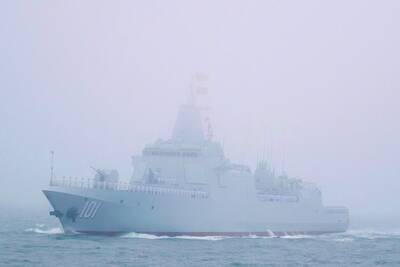Japanese real estate mogul Genshiro Kawamoto handed over three of his many multimillion-dollar homes in Oahu's priciest neighborhood to homeless and low-income Native Hawaiian families.
Tears ran down Dorie-Ann Kahele's cheeks on Thursday as she accepted the key to a white columned house worth nearly US$5 million. Her family will live in the mansion rent-free.
Kawamoto plans to open eight of his 22 Kahala neighborhood homes to needy Hawaiian families. He says they will be able to stay in the homes for up to 10 years.

PHOTO: AP
Kahele, 39, and her five daughters had been living in one small room at a homeless shelter for the past five years.
"What we need to do is appreciate," Kahele said. "As fast as we got it, it could disappear."
Kawamoto, whose eyes started welling up when Kahele cried, said he will not charge the families anything to live in the homes. They will, however, have to pay their own utility bills.
The billionaire is one of Japan's richest men. He said he was embarking on the unusual venture because it made him happy. He also gave each family 10 US$100 bills to help them move in.
Native Hawaiians are disproportionately represented among the state's homeless and working poor.
Kawamoto owns dozens of office buildings in Tokyo and has been buying and selling real estate in Hawaii and California since the 1980s.
He has been criticized for evicting tenants of his rental homes on short notice so he could sell the properties, as in 2002, when he gave hundreds of California tenants 30 days to leave.
Two years later, he served eviction notices to tenants in 27 Oahu rental homes, saying they had to leave within a month. He said he wanted to sell the houses to take advantage of rising prices.
Kawamoto selected the eight low-income families from 3,000 people who wrote him letters last fall after he announced his plan. He has said he tried to pick working, single mothers.
He added it showed more dedication to helping the homeless than just handing out cash.
Kawamoto laughed when asked if he was concerned about losing money on the effort, saying: "This is pocket money for me."
Kahele became homeless two years ago when her landlord raised her rent from US$800 to US$1,200, putting the apartment beyond reach of her salary as a customer service representative.

END OF AN ERA: The vote brings the curtain down on 20 years of socialist rule, which began in 2005 when Evo Morales, an indigenous coca farmer, was elected president A center-right senator and a right-wing former president are to advance to a run-off for Bolivia’s presidency after the first round of elections on Sunday, marking the end of two decades of leftist rule, preliminary official results showed. Bolivian Senator Rodrigo Paz was the surprise front-runner, with 32.15 percent of the vote cast in an election dominated by a deep economic crisis, results published by the electoral commission showed. He was followed by former Bolivian president Jorge “Tuto” Quiroga in second with 26.87 percent, according to results based on 92 percent of votes cast. Millionaire businessman Samuel Doria Medina, who had been tipped

ELECTION DISTRACTION? When attention shifted away from the fight against the militants to politics, losses and setbacks in the battlefield increased, an analyst said Recent clashes in Somalia’s semi-autonomous Jubaland region are alarming experts, exposing cracks in the country’s federal system and creating an opening for militant group al-Shabaab to gain ground. Following years of conflict, Somalia is a loose federation of five semi-autonomous member states — Puntland, Jubaland, Galmudug, Hirshabelle and South West — that maintain often fractious relations with the central government in the capital, Mogadishu. However, ahead of elections next year, Somalia has sought to assert control over its member states, which security analysts said has created gaps for al-Shabaab infiltration. Last week, two Somalian soldiers were killed in clashes between pro-government forces and

Ten cheetah cubs held in captivity since birth and destined for international wildlife trade markets have been rescued in Somaliland, a breakaway region of Somalia. They were all in stable condition despite all of them having been undernourished and limping due to being tied in captivity for months, said Laurie Marker, founder of the Cheetah Conservation Fund, which is caring for the cubs. One eight-month-old cub was unable to walk after been tied up for six months, while a five-month-old was “very malnourished [a bag of bones], with sores all over her body and full of botfly maggots which are under the

BRUSHED OFF: An ambassador to Australia previously said that Beijing does not see a reason to apologize for its naval exercises and military maneuvers in international areas China set off alarm bells in New Zealand when it dispatched powerful warships on unprecedented missions in the South Pacific without explanation, military documents showed. Beijing has spent years expanding its reach in the southern Pacific Ocean, courting island nations with new hospitals, freshly paved roads and generous offers of climate aid. However, these diplomatic efforts have increasingly been accompanied by more overt displays of military power. Three Chinese warships sailed the Tasman Sea between Australia and New Zealand in February, the first time such a task group had been sighted in those waters. “We have never seen vessels with this capability